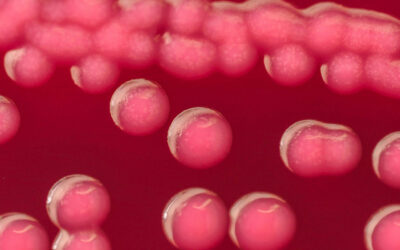Adding compounds naturally found in wood to pesticides could prevent them from bouncing off leaves and ending up on the soil — a common problem facing farmers across the globe.
Crops are regularly sprayed with pesticides, herbicides, nutrients and hormones to prevent disease and improve productivity. However, most plants relevant in agriculture have a waxy layer on the surface of their leaves that makes them water repellent. This results in any liquids sprayed on them bouncing, sliding off and splashing away, which reduces their efficiency and pollutes the soil.
While the exact numbers are difficult to estimate, scientists believe only about 10% of pesticides and other chemicals sprayed on agricultural land stays on plant leaves as intended, says Bruno Dufau Mattos, senior scientist at Aalto University in Finland.
Current solutions available to farmers rely on synthetic compounds that can either be toxic to plants or difficult to spray because of their high viscosity. Mattos and colleagues have come up with an alternative that instead relies on natural compounds found in wood. A key advantage is that these compounds can easily be extracted by running hot water at high pressure through sawdust, offering a cost-competitive and environmentally friendlier alternative to current chemical solutions.
“It’s a very simple process,” said Mattos. “At the end of it you have a mixture that works as it is, no further steps needed.”
In a proof-of-concept study, the researchers showed that adding these compounds to a pesticide mixture could result in leaves retaining up to 10 times more liquid, outperforming synthetic solutions used today.
Observing droplets
In agriculture, pesticides and other treatments are typically dissolved in water, which is then sprayed on plants. To study the effects of their solution, the researchers studied the behavior of water droplets on plant leaves. Their setup involved a needle that can drop a controlled amount of liquid and a high speed camera that can capture its movement.
“We drop the solution from a given height and follow the droplet as it hits the surface and starts spreading,” said Mattos. “This all happens within milliseconds, it’s something we would never be able to see with the naked eye.”
Measuring the size of the droplets that stay on the leaves gave the scientists an estimate of how much of the active compound will be left on the leaves after being sprayed. Compared to pure water, the addition of their wood extract at a concentration of 0.1% resulted in 10 times more liquid retention in citrus leaves.
These effects, however, can vary depending on the plant. When the researchers tested the same solution on cauliflower leaves, which are extremely water repellent, they found they had to increase the concentration by 10 times to achieve a similar effect.
The next step was to test how well their additives worked in combination with active compounds; They sprayed plants with a herbicide and simulated rain over the course of seven days. Over time, they found that the additives helped the herbicide stick to the leaves and make them die faster.
Towards practical implementation
The molecules behind this feat are hemicellulose and lignin — two of the most common compounds naturally found in wood. Their unique properties sparked the scientists’ interest in testing whether they could be useful for agricultural applications.
The beauty of this solution lies in how easy it is to obtain these molecules. Running pressurized hot water through wood is enough to extract them, ready to use.
“When you have an application that is as large as agriculture, everything you do has to be very simple and affordable,” explained Mattos.
What’s more, this extraction process could be embedded into existing manufacturing processes to bring additional value. For instance, the extraction could be implemented before pulping — the first step of papermaking — since hemicellulose and lignin are typically removed in this process anyway.
Next up, Mattos and colleagues are interested in better understanding the behavior of these compounds and how altering their ratios could improve control over their properties. To turn their discovery into a commercially-viable solution, they will also have to consider multiple challenges to their implementation.
“Agricultural operations rely on extremely big volumes and formulations are highly concentrated for transport,” said Mattos. “We need to understand what would be the shelf life of these solutions, and how would they react to coexisting with other compounds.”
Reference: Mamata Bhattarai et al., Wood Biomolecules as Agricultural Adjuvants for Effective Suppression of Droplet Rebound from Plant Foliage, Advanced Science (2025). DOI: 10.1002/advs.202416686
Feature image credit: Jude Infantini on Unsplash

















